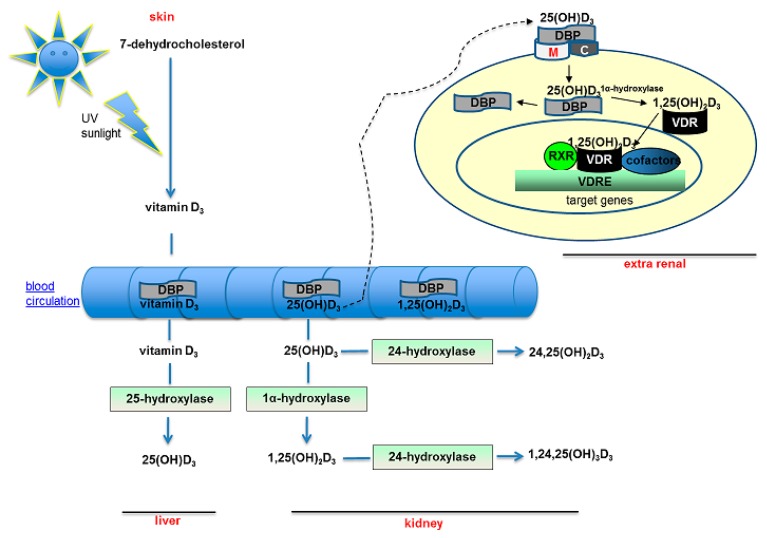Figure 1.
Vitamin D pathway: The vitamin D synthesis goes through a series of hydroxylation steps in which the 25-hydroxylase (CYP2R1) and 1-α-hydroxylase (CYP27B1) are involved. The resulting 25(OH)D3 and 1,25(OH)2D3 are transported into the circulation bound to the vitamin D binding protein (DBP). The 25(OH)D3 enters into the cells via the megalin/cubilin complex. Intracellularly, 1,25(OH)2D3 binds to the vitamin D receptor (VDR) and exerts its genomic effects. In this manner, vitamin D can (1) suppress PTH synthesis in parathyroid glands; (2) increase bone mineralization; (3) increase absorption of calcium and phosphate in the intestine; (4) induce the differentiation of immune cells; and (5) improve the haematopoiesis of red blood cells. Finally, the degradation of vitamin D occurs via 24-hydroxylase (CYP24A1).

